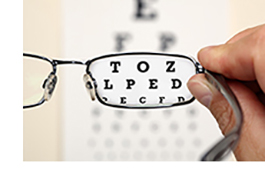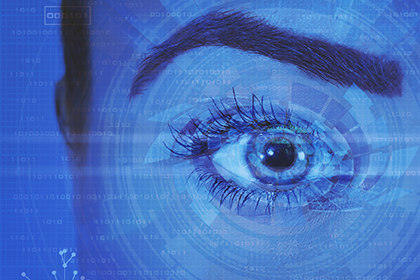|
A recent Harris Poll found that nearly two out of three American adults report having medical eye issues or vision problems. The majority of them fail to have medical eye exams that could possibly save their sight.
The Harris Poll, commissioned by the American Academy of Ophthalmology, showed that 64 percent of adults had at least one of these problems with their eyes or vision:
- Blurred vision
- Trouble seeing at night
- Double vision
- Experiencing flashes of light
- Problems reading up close
- Symptoms of red or watery eyes
Ophthalmologists are committed to helping people maintain healthy eyes and vision as they age. “It is very important to see an ophthalmologist for any medical eye issues,” says Neal A. Sher, MD, FACS. “Just like the rest of our body, our eyes are impacted with age and they deserve the highest level of care. Common age-related eye diseases, such as macular degeneration, cataracts, diabetic retinopathy and glaucoma, can begin to steal your vision before you even realize it.”
“Regular dilated eye exams are important for catching problems before vision loss occurs. These regular eye exams can prevent potentially blinding eye disease and should be part of a patient’s overall health maintenance plan.”
Article adapted from the AAO.org website.
 It can be beneficial to your vision to let the sunshine in It can be beneficial to your vision to let the sunshine in
It is far more common to be nearsighted today than ever. According to a study by the National Eye Institute, the occurrence of myopia in America, which is the medical name for the condition, has soared by 66 percent since the early 1970s. Even more surprising is the fact that in China and other East Asian countries, as many as 90 percent of recent high school graduates are thought to be nearsighted.
Nearsightedness or myopia occurs when the eyeballs are longer than normal. This changes the angle at which light enters the eye and negatively affects the ability to focus on distant objects. Myopia usually begins before adolescence when the eye is growing and involves a complex interplay of genetics and environment. This condition often worsens during early adulthood.
Many make the assumption that the elevated rates of myopia are related to the many hours young people stare at computers and other screens. However, a recent study published in JAMA Ophthalmology suggests that a greater factor may be a side effect of all that screen-watching; today’s children spend much more time indoors. A growing body of research indicates that the shape of the human eye can be influenced by a lack of direct sunlight.
CLICK HERE TO READ MORE
 What Does The Term 20/20 Vision Really Mean? What Does The Term 20/20 Vision Really Mean?
Everyone is familiar with the standard of vision called “20/20 vision”. We think that it is the level we need to achieve when wearing eyeglasses or contacts.
When asked this question, Dr. Neal Sher replied, “A person with 20/20 vision can see what an average individual can see on an eye chart when they are standing 20 feet away. An eye chart is used to measure visual acuity, which is the clarity or sharpness of vision. The top number of the 20/20 phrase refers to your distance in feet from the chart. The bottom number indicates the distance at which a person with normal eyesight can read the same line.”
When a patient is told that they have 20/30 vision, it means that their vision is worse than average. When they are standing 20 feet from the chart, they can read letters that most people see when they are 30 feet away.
Despite most people’s perception however, 20/20 vision is not perfect vision. Some people have 20/15 vision, which is sharper than average. If you have 20/15 vision, you can see a line in the eye chart at 20 feet that the average person can only see when they are 15 feet away. In general, the goal of correcting vision with glasses or contacts is to bring a person’s vision to 20/20.
Only about 35 percent of all adults have 20/20 vision without glasses, contact lenses or corrective surgery. With corrective measures, approximately 75 percent of adults have 20/20 vision. In almost every state, visual acuity of 20/40 or better is required for an unrestricted driver’s license. People are considered “legally blind” if their corrected vision (with eyeglasses or contacts) is 20/200 or worse.
CLICK HERE TO READ MORE

What? Your Blue Eyes Arenít Really Blue!
Although brown eyes get their color from melanin, the same pigment that colors your skin, blue eyes actually don’t have any blue pigment in them at all. Blue eyes get their color the same way water and the sky gets their blue color. They simply scatter light so that more blue light reflects back out.
The colored part of the eye is called the iris. It’s a structure that contains muscle and other kinds of cells. You can see the iris in action when it squeezes or relaxes to let in more or less light through the pupil. The iris is made up of two layers. For almost everyone — even people with blue eyes — the back layer (called the pigment epithelium) has brown pigment in it.
The front layer of the iris (called the stroma) is made up of overlapping fibers and cells. For people with brown eyes, some of the cells also have brown pigment in them. If there is no pigment at all in this front layer, the fibers scatter and absorb some of the longer wavelengths of light that come in. More blue light gets back out and the eyes appear to be blue.
For people with green or hazel eyes, one or both of the layers of the iris also has some light brown pigment in it. The light brown pigment interacts with the blue light and the eye can look green or speckled. Many people have variations in the color of their irises, often with one color near the pupil and another at the edge. This variation happens when different parts of the iris have different amounts of pigment in them.
CLICK HERE TO READ MORE
|


